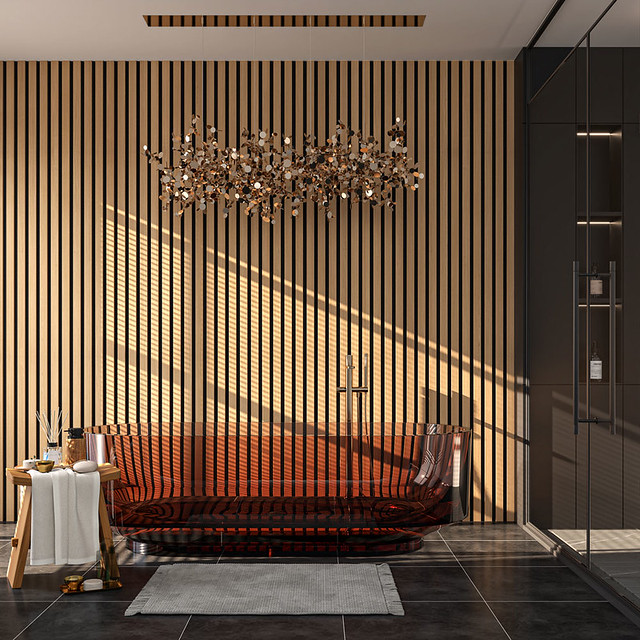5 Hotel Room Design Ideas
A hotel room’s design must be both beautiful and functional. Creating a lounge area that includes chairs or couches will help guests relax while reading a book or sipping coffee.
Adding regional art can also foster a sense of place and create a more authentic experience for your visitors. Additionally, light colors can expand rooms and reduce echoes to make spaces feel more spacious.
Feature Walls
As hotel guests we often stay in rooms that have very little bespoke elements, so adding features to your walls can be a great way to create a truly unique space. Feature walls are great for highlighting design themes and telling a room’s story. They can also be a beautiful contrast to more neutral finishes or used as an extension of your bed.
Whether it’s cladding a wall in fabric, introducing a bold stone inspired wallpaper or using a high-back banquette seat covered in velvet, adding a unique texture to your room can really make it feel like home. The key is to use this element sparingly so as not to overwhelm the room.
Wood additions can also be a very welcoming touch to any hotel. Whether it’s a wooden headboard, a wooden table or even a wooden ceiling, this natural material gives interior hotel room design an earthy feeling to a room and creates a sense of warmth.
Another wonderful texture option is woven fabrics. Whether it’s a patterned weave or a more subtle, textured linen, creating an added softness to your bedroom can help to calm and comfort a guest in the evening.
Brass Elements
One of the best hotel interior design ideas is to add brass elements. Not only does this look luxurious, but it also adds a sense of luxury and opulence to the room. This can be done through furniture, lighting, or even decor items like vases and framed artwork. The key is to find the right balance, since too much brass can quickly become overwhelming.
Another way to add a touch of elegance is by using patterned carpets and furnishings. These are more subtle and don’t clash with the overall aesthetic of the room. In addition, they create a cozy and inviting feel.
You can also use bold-colored cushions with special designs to steal the show and make a statement. These are a great way to create a focal point that will remind guests of their stay in your hotel and motivate them to share their experience on social media.
Incorporating these specialized touches will help distinguish your hotel from the competition and increase guest satisfaction, which translates into better ratings and reviews. Not only will this improve your hotel’s reputation, but it will also have a direct impact on your revenue. This is because the better your hotel’s rating, the more people will want to book a stay with you. So, it’s definitely worth the investment! Contact us at Vogue Hospitality for more information about our hotel interior design and furniture services.
Textured Surfaces
Texture refers to the surface quality of a material, and it has a powerful impact on the tone and visual weight of your hotel room. It can make a space feel cozy and inviting, sleek and sophisticated, or anywhere in between. Rough textures like wool, stone, and wood evoke a natural and rustic ambiance while slick materials like marble-look porcelain tiles and glass cladding can give rooms a modern vibe.
Incorporate texture into your design using various elements, including wall coverings, flooring, and furniture. You can even use decorative Fixed furniture accents, such as a plant or patterned pillows, to add texture to your space. Choosing a color that complements your textures is also important. Cool colors like blues and greens promote relaxation and create a serene ambiance. Warm colors, on the other hand, stimulate conversation and work well in living areas or conversation nooks.
Texture can also be introduced through the use of patterned wallpapers or textured paint, as well as through architectural details like simple crown molding, wainscoting, picture molding, and beadboard. Lastly, you can also introduce a range of textured surfaces through your choice of light fixtures. The right lighting can help to highlight your textured materials and create a dramatic effect.
Natural Light
The use of natural light in hotel rooms is essential to create a feeling of openness and brightness. Ideally, the ambient lighting in hotel rooms should have a warm temperature to help guests sleep better and feel relaxed.
Achieving this requires the use of dimmers, which allow guests to adjust the level of lighting in their rooms to their liking. This also helps to reduce energy waste. Additionally, hotels can utilize motion sensors to prevent lights from being left on unnecessarily and to conserve energy.
Lighting isn’t just used to illuminate rooms, but can also highlight art and decorative elements. Incorporating LED wall lights can draw attention to a painting or bust, for example. Similarly, ceiling lighting can be used to accentuate a headboard or create a cozier coffee nook.
In addition to using various shapes, angles, designs, and directions of the luminaires, a perfect hotel lighting design must be carefully arranged and controlled to avoid glare. For example, this luxurious hotel room has a custom lighting design that uses black swag lamps to provide accent light and reduce glare. The lighting intensity is also regulated to match the decor of the room. This helps to ensure that the lighting design is consistent with the theme of the room and provides a memorable experience for guests.

